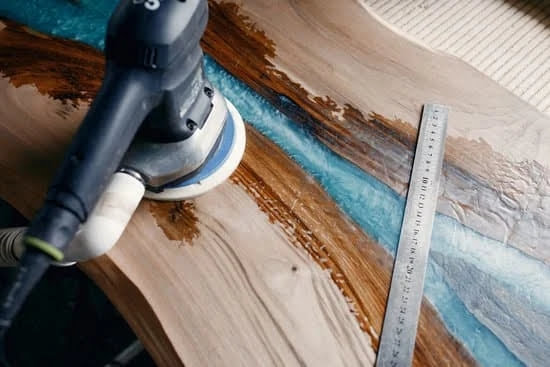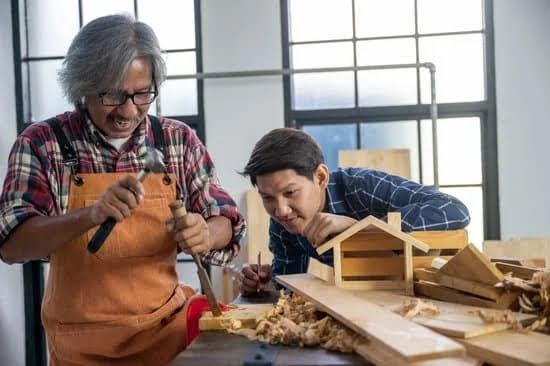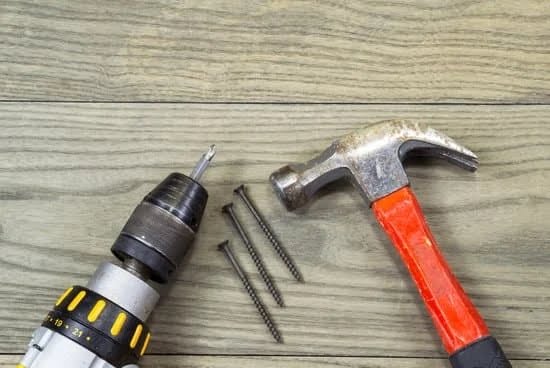What do you need to begin woodworking? Woodworking is a popular hobby that allows individuals to create beautiful and functional pieces from scratch.
Whether you are interested in building furniture, crafting small items, or simply enjoy working with your hands, woodworking can be a rewarding and fulfilling pursuit. In this article, we will explore the essential tools for beginners, safety precautions to consider, selecting the right type of wood, setting up a workspace, basic techniques, resources for learning more, and project ideas for those just starting out in the world of woodworking.
Many people are drawn to woodworking because it provides an opportunity to express creativity and craftsmanship. With the right tools and techniques, anyone can learn how to make their own unique creations out of wood. Additionally, woodworking allows for a sense of accomplishment as beginners see their skills improve and their projects come to life. This hands-on craft also provides a break from screen time and offers a therapeutic outlet for stress relief.
Whether you are looking to build simple shelves or intricate furniture pieces, having the right tools is essential for any woodworking project. From saws and drills to measuring tools and sanders, beginners should invest in quality equipment that will help them achieve precise cuts and finishes.
Along with the necessary tools, it is equally important to prioritize safety by wearing protective gear such as goggles and ear protection while working with wood. By understanding the basics of woodworking tools and safety measures, beginners can confidently embark on their woodworking journey.
Overview of Essential Tools for Beginners
When starting your woodworking journey, having the right tools is essential to ensure success and safety in your projects. So, what do you need to begin woodworking? Here is an overview of some essential tools that beginners should consider investing in:
1. A high-quality set of chisels: Chisels are versatile tools that are used for shaping and carving wood. They come in various sizes and shapes, so having a good set will allow you to tackle different types of projects with precision.
2. A reliable saw: Whether it’s a handsaw or a power saw, having a tool for cutting wood is crucial in woodworking. A handsaw is great for smaller projects or precise cuts, while a power saw can make larger cuts quickly and efficiently.
3. Measuring and marking tools: Accurate measurements are key in woodworking to ensure pieces fit together properly. Invest in measuring tape, a combination square, and marking knives to help you mark and cut wood with precision.
Additionally, other essential tools include a hammer, screwdrivers, clamps, sandpaper for finishing touches, and a workbench to provide stability while working on your projects. By acquiring these essential tools, you’ll be well-equipped to start your woodworking journey with confidence and success.
Safety Precautions to Be Aware of Before Starting Woodworking
Woodworking is a rewarding and fulfilling hobby that allows individuals to create handmade, customized pieces of furniture, decor, and more. However, it is essential to prioritize safety when embarking on woodworking projects. Before you start sawing, sanding, and shaping wood, there are important safety precautions to be aware of to protect yourself from potential accidents or injuries.
Protective Gear
One of the first things you need to do before beginning any woodworking project is to gather the necessary protective gear. This includes wearing safety goggles to protect your eyes from flying wood chips or debris, ear protection if you are using loud power tools, a dust mask to prevent inhaling sawdust particles, and gloves to protect your hands from splinters or sharp edges. Investing in high-quality protective gear will help ensure that you can work safely and comfortably.
Tool Operation Safety
Before using any power tools or machinery for woodworking, it is crucial to familiarize yourself with their operation and safety features. Always read the manufacturer’s instructions and guidelines for each tool carefully before use. Make sure that all tools are in good working condition with guards and safety features intact. It is also important to maintain a clean workspace free of clutter and distractions that could lead to accidents while operating power tools.
Fire Safety
Woodworking involves working with flammable materials such as wood shavings, sawdust, or finishing products like varnish or paint thinners. To prevent fires in your workshop, ensure that you have a fire extinguisher within reach at all times and know how to use it properly. Also, be mindful of where you store flammable materials and keep them away from heat sources or open flames. Implementing proper fire safety precautions will help minimize the risk of accidents in your woodworking space.
By following these safety precautions and being aware of potential risks before starting your woodworking projects, you can create a safe environment for yourself as you hone your skills in this craft. Remember that prioritizing safety is key to enjoying woodworking without unnecessary risks or injuries; always err on the side of caution when it comes to handling tools and materials in your workshop.
Choosing the Right Type of Wood for Your Projects
When starting your woodworking journey, one of the key considerations is choosing the right type of wood for your projects. The type of wood you use can greatly impact the final look, feel, and durability of your creations. There are a wide variety of wood species available, each with unique characteristics that make them suitable for different purposes.
One important factor to consider when selecting wood is its hardness. Hardwoods like oak, walnut, and maple are known for their strength and are ideal for furniture making and other projects that require durability. On the other hand, softwoods like pine and cedar are easier to work with and are often used for projects like outdoor furniture or decorative items.
Another important consideration is the appearance of the wood. Some woods have distinct grain patterns and color variations that can add visual interest to your projects. For example, cherry wood has a rich reddish-brown tone that darkens over time, while mahogany features a deep brown color with a straight grain pattern.
| Wood Type | Characteristics |
|---|---|
| Oak | Hardwood with prominent grain patterns; great for furniture making |
| Pine | Softwood with light color; easy to work with for beginners |
| Walnut | Hardwood with rich dark brown color; ideal for fine woodworking projects |
How to Set Up a Woodworking Space in Your Home
Setting up a dedicated woodworking space in your home is essential to begin your woodworking journey. Having a designated area where you can work on projects not only keeps your tools organized but also ensures safety and efficiency. Here are some key steps to consider when setting up your woodworking space:
Choose the Right Location
The first step in creating a woodworking space is selecting the right location in your home. Consider factors like natural light, ventilation, and access to power outlets. A garage, basement, or spare room are common choices for setting up a woodworking workshop.
Organize Your Tools
Proper tool organization is crucial for a functional workspace. Invest in tool storage solutions like pegboards, tool chests, and shelves to keep your tools easily accessible and well-maintained. This will not only save you time looking for the right tool but also prevent accidents caused by cluttered work areas.
Create a Workbench
A sturdy workbench is the heart of any woodworking space. Make sure to have a solid surface where you can carry out your projects comfortably. You can either purchase a pre-made workbench or build one yourself according to your specific needs and preferences.
By following these steps and setting up a well-equipped woodworking space in your home, you’ll be ready to dive into the world of woodworking with confidence and enthusiasm. Remember that having a dedicated workspace is not only practical but can also inspire creativity and passion for this rewarding hobby.
Basic Woodworking Techniques for Beginners
Woodworking is a rewarding and fulfilling hobby that allows individuals to create beautiful, functional pieces with their own hands. If you are thinking about starting your woodworking journey but are unsure of where to begin, here is a list of essential tools and equipment you will need to get started:
- A good quality set of chisels for shaping and carving wood
- A reliable hand saw for cutting wood to size
- A sturdy workbench or table where you can securely hold your wood while working on it
- A combination square for measuring and marking accurate angles
- Sanding blocks or sandpaper for smoothing out rough edges and surfaces
In addition to having the right tools, it is important to familiarize yourself with some basic woodworking techniques that will help you tackle your projects with ease. Here are a few fundamental techniques that every beginner woodworker should master:
- Measuring and Marking: Accurate measurements are crucial in woodworking, so make sure you have the right measuring tools such as a tape measure or ruler.
- Cutting: Practice using a hand saw or power saw to cut your wood pieces to the desired dimensions.
- Joinery: Learn how to join pieces of wood together using techniques like butt joints, miter joints, and dovetail joints.
By mastering these basic woodworking techniques and acquiring the necessary tools, you will be well on your way to creating beautiful wooden projects that showcase your skills and creativity. So, gather your supplies, set up your workspace, and start honing your woodworking skills today.
Resources for Learning More About Woodworking
As a beginner in woodworking, it is essential to expand your knowledge and skills through various resources available. One of the best ways to learn more about woodworking is by enrolling in classes or workshops. Many local community centers, schools, and woodworking stores offer courses that cover different aspects of woodworking, from basic techniques to advanced projects. These classes provide hands-on experience and guidance from experienced woodworkers, which can greatly enhance your skills.
Additionally, there are numerous online resources that you can take advantage of to learn about woodworking. Websites, forums, and social media platforms dedicated to woodworking are excellent sources of information, tips, and tutorials. Online videos on platforms like YouTube can also be a valuable tool for visual learners who prefer to see demonstrations of various techniques. By exploring these resources regularly, you can gain insights into new methods, tools, and projects that will help you improve as a woodworker.
Another way to immerse yourself in the world of woodworking is by reading books and magazines on the subject. There are countless publications available that cover everything from beginner basics to specialized topics like furniture making or wood carving.
These resources not only provide valuable information but also inspire creativity and offer new ideas for your woodworking projects. Investing time in reading about woodworking will broaden your understanding of the craft and help you discover new ways to approach your work.
| Resource Type | Description |
|---|---|
| Classes/workshops | Hands-on experience with guidance from experienced woodworkers |
| Online resources | Websites, forums, social media platforms for tips and tutorials |
| Books/magazines | In-depth information on various aspects of woodworking |
Projects to Start With as a Beginner Woodworker
Woodworking is a fulfilling hobby that allows individuals to create beautiful and functional pieces using their hands and creativity. If you’re looking to start your woodworking journey, it’s essential to begin with simple projects that will help you hone your skills and build confidence. Here are some projects that are perfect for beginner woodworkers:
- A floating shelf: This project is a great introduction to woodworking as it involves basic measuring, cutting, and assembly techniques. Floating shelves are versatile and can be used to display photos, plants, or other decorative items in your home.
- A wooden planter box: Building a wooden planter box is a fun way to practice cutting and assembling wood while also creating a useful item for your garden or indoor plants. You can customize the size and design of the planter box based on your preferences.
- A simple bench: Making a simple wooden bench is an excellent project for beginners to learn about attaching legs, adding support beams, and finishing wood surfaces. A bench can be a practical addition to your home or outdoor space.
As you work on these beginner projects, remember to focus on mastering basic woodworking techniques such as measuring accurately, cutting straight lines, drilling pilot holes, and sanding surfaces smooth. By starting with these simple projects, you’ll gradually build confidence in your woodworking skills and be ready to tackle more complex creations in the future.
Remember
- Practice patience and take your time with each step of the project.
- Don’t be afraid to make mistakes – they are all part of the learning process.
- Seek guidance from experienced woodworkers or online resources if you encounter challenges along the way.
Conclusion
Woodworking is a rewarding and fulfilling hobby that allows individuals to unleash their creativity, create practical items, and work with their hands. As discussed in this article, starting your woodworking journey requires a few essential tools, a safe working environment, the right materials, and basic techniques. So, what do you need to begin woodworking?
To begin woodworking, it is important to invest in essential tools such as a saw, hammer, chisel, measuring tape, sandpapers, and clamps. These tools will provide you with the foundation needed to start your projects and develop your skills over time. Additionally, it is crucial to prioritize safety by wearing protective gear such as goggles and ear protection, following safety guidelines for each tool, and ensuring proper ventilation in your workspace.
When choosing the type of wood for your projects, consider factors such as hardness, grain patterns, and affordability. Setting up a dedicated woodworking space in your home will help you stay organized and focused on your projects. By understanding basic woodworking techniques like measuring accurately, cutting properly, and joining pieces securely, you can gradually progress to more complex projects. Remember: practice makes perfect.
As you embark on your woodworking journey as a beginner, remember that patience and perseverance are key. Don’t be afraid to make mistakes – they are part of the learning process. Utilize resources such as online tutorials, books, workshops or classes to expand your knowledge and skills in woodworking. Lastly,don’t forget to have fun along the way and enjoy the satisfaction of creating something unique with your own hands. Happy crafting.
Frequently Asked Questions
What Tools Do You Need to Get Started in Woodworking?
To get started in woodworking, you will need some basic tools like a hammer, tape measure, saws (such as a circular saw or hand saw), chisels, sandpaper, clamps, and a drill. These tools will help you tackle beginner woodworking projects effectively.
How Do I Start Woodworking From Scratch?
Starting woodworking from scratch involves learning the basics of the craft, such as understanding different types of wood and their uses, safety precautions when using tools, and basic woodworking joinery techniques. Begin with simple projects like shelves or small tables to practice your skills before moving on to more complex pieces.
What Do I Need to Start a Wood Workshop?
To start a wood workshop, you will need a dedicated space that is well-ventilated and equipped with essential woodworking tools like table saws, planers, jointers, routers, and dust collection systems. Additionally, having workbenches, storage for materials, and good lighting are crucial for creating a functional workshop environment.

Hi everyone! I’m a woodworker and blogger, and this is my woodworking blog. In my blog, I share tips and tricks for woodworkers of all skill levels, as well as project ideas that you can try yourself.





